yvphotograph
TPF Noob!
- Joined
- May 15, 2012
- Messages
- 4
- Reaction score
- 0
- Location
- Nederland
- Can others edit my Photos
- Photos NOT OK to edit
I am from Rotterdam in The Netherlands. Rotterdam is a port city. A working class city. This is the story of Feyenoord, a professional football club in Rotterdam. The club is historically one of the three clubs that dominate the Dutch national football league. The football club Wilhelmina was founded in the pub De Vereeniging on 19 July 1908 and played in blue-sleeved red shirts and white shorts. Between 1908, 1910, 1911 and 1912, the club underwent a series of changes of name and team colors, becoming Hillesluise Football Club in 1909 and then RVV Celeritas. Upon earning promotion to the National football association in 1912, the club renamed to become SC Feijenoord, after the city district in which the team was founded and again changed uniform, adopting the red and white shirts, black shorts and black socks they still wear today. In 1917, Feijenoord were promoted to the highest level of Dutch football, 1e klasse (1st division) and moved to the ground Kromme Zandweg.
In 1963, hundreds of thousands of people stood ashore by the Nieuwe Maas and the Nieuwe Waterweg to wave two ships, de Groote Beer and the Waterman goodbye. The ships transported thousands of Feijenoord fans to Lisbon where the club faced Benfica on 8 May 1963 in the European Cup semi-finals. The first leg, held in Rotterdam a month earlier, finished 00. Feijenoord eventually lost the match against Benfica 31, but this turned out to be the start of the most successful period in the club's history. Feijenoord won the double for the first time in their history in 1965, and managed to win another double a few years later in 1969. The 1965 title secured Feijenoord a spot in the 196566 European Cup, where they faced multiple cup champions Real Madrid on 8 September 1965 in the preliminaries. During the match, Hans Kraay had to leave the pitch injured after 31 minutes, without being substituted. He returned at the start of the second half and scored the goal which resulted in a 21 win. Later during the match, fans' favourite Coen Moulijn was attacked roughly by a Spanish defender. Moulijn then chased the defender all over the pitch. Several other players did the same, as did some fans who entered the pitch. The referee could do nothing, but suspend the match at 21 in Feijenoord's favour.
As the 1969 Dutch champions, Feijenoord participated in the 196970 European Cup. After thrashing Knattspyrnufélag Reykjavíkur 162 on aggregate in the first round, the club faced Milan. Feijenoord lost the first leg 10 in Italy, but overcame the deficit in their own stadium following a 20 win, securing a place in the quarter-finals, where they faced ASK Vorwärts Berlin.
The tie followed the same pattern as the previous round, Feijenoord losing the first match 10 away, then winning 20 at home. In the semi-finals, Legia Warszawawere beaten 20 on aggregate, earning Feijenoord their first European final.
Feijenoord faced Celtic in the final, held in the San Siro stadium in Milan. Goals by Tommy Gemmell and Rinus Israël resulted in a 11 draw after 90 minutes. Three minutes before the end of extra time, Ove Kindvall scored Feijenoord's winning goal to make them the first Dutch team to claim a major European trophy.
As reigning European champions, Feijenoord faced Estudiantes La Plata in the Intercontinental Cup. The first match in Buenos Aires' La Bombonera finished in a 22 draw. Back in Rotterdam, Feijenoord managed a 10 victory (winning goal by Joop van Daele) to win the world club crown, the first Dutch team to do so. Estudiantes player Oscar Malbernat got frustrated and grabbed Van Daele's glasses and trampled on them. "You are not allowed to play with glasses... at least not in South America" was his excuse
In 1973, the club decided to change their name to Feyenoord, as people from outside the Netherlands found it difficult to pronounce the "ij" in Feijenoord. Under their new name, they played in the 1973-74, reaching the final, following a 43 aggregate win over VfB Stuttgart in the semi finals. The opponent in the final was Tottenham Hotspur. Spurs took a 21 lead in the first leg at White Hart Lane, but Theo de Jong equalised after 85 minutes and the match ended in a 22 draw. Feyenoord then won their match in Rotterdam 20, thanks to goals by Wim Rijsbergen and Peter Ressel, and also became the first Dutch team to win the UEFA Cup.
Feyenoord again participated in the Champions League in 200102, finishing third in a group containing Bayern Munich, Sparta Prague and Spartak Moscow. This meant Feyenoord had to continue their European season in the 200102 UEFA Cup instead of the second Champions League group stage. The disappointment of failing to reach the second group stage eventually resulted in optimism and celebration. By winning over SC Freiburg and Rangers, Feyenoord faced fellow Dutch team PSV in the quarter-finals. Both matches ended in 11 draws, and the clash went into extra time and a penalty shoot-out. Pierre van Hooijdonk, who had a superb season by scoring many goals from free kicks secured Feyenoord's win by scoring in the 90th minute equalizer before finishing PSV off by scoring the last goal in the penalty shoot-out. A 10 win in Milan against Internazionale, and a 22 return match in Rotterdam, earned Feyenoord their spot in the final, in which Borussia Dortmund was the opponent. The final was held in De Kuip and as a result, most spectators inside the stadium were Feyenoord fans. Feyenoord took a 20 lead, thanks to another free kick and a penalty by Pierre van Hooijdonk.[56] Early in the second half Jan Koller scored a goal to make it 21. Jon Dahl Tomasson then made it 31 and things looked good for Feyenoord. Dortmund only managed to score one more goal and the cup was won by Bert van Marwijk's Feyenoord.
A huge party erupted in and outside De Kuip not only because of the title, but also because the final was held several days, after Rotterdam's political hero Pim Fortuyn was murdered. Lots of fans were still full of emotion, before and after the match. As a result of Fortuyn's murder, the cup was not officially celebrated in the city center.
The 2002 UEFA Cup win was the start of a dark period in the history of the club.
The 200506 season ended in disappointment for Feyenoord. The team challenged for the Dutch Championship for most of the season, but eventually lost out to PSV.
In the 200607 season, the nightmare grew even bigger. The supporters saw their two star players leave to Chelsea (Salomon Kalou) and Liverpool (Dirk Kuyt). At the same time, it became clear that Feyenoord were in an appalling financial state despite earlier comments made by chairman Van den Herik who claimed that the club was financially healthy. Supporters unrest grew into anger, when Feyenoord bought Charisteas, a back-up striker of arch-rivals Ajax, with a poor track record, as a replacement for Kuyt. After continuous protests, chairman Van den Herik resigned, and the club started managerial reforms. The worst was not over though. Feyenoord were banned from European competition, following hooliganism prior to and during a match with AS Nancy, despite an appeal by the club. The season ended in bitter disappointment with a seventh place finish, causing Feyenoord to miss European football for the first time in 16 years.
While desperate supporters started preparing for a dark age, the club surprised friend and foe in the 2007 summer transfer window. A brilliant performance of young left back Royston Drenthe at the 2007 UEFA European Under-21 Football Championship had investors flocking to the new investment schemes Feyenoord had set up. The club appointed former manager Bert van Marwijk and was able to make a number of high profile signings amongst which Giovanni van Bronckhorst and Roy Makaay. Despite the efforts, Feyenoord underperformed once again in the national league, finishing in a disappointing sixth place. The pain was relieved by claiming the first prize in six years: 100 years after the foundation of the club, Feyenoord managed to win the Dutch Cup, beating Roda JC by 20. As Bert van Marwijk accepted a job as manager of the national team, Feyenoord appointed Gertjan Verbeek as their manager for the 200809 season.
In the 200809 season, Feyenoord officially celebrated their 100th birthday and organised many events throughout the year. The old "golden logo" returned as Feyenoord's official logo, which was presented at the 2007 new years brunch.[67] During the summer a historical tournament was held between Feyenoord and the three opponents they met in the European Cup finals, they played, Borussia Dortmund, Tottenham Hotspur and Celtic (Feyenoord Jubilee Tournament).
Mid-way through the season manager Verbeek was sacked because of disappointing league results. His assistant, Leon Vlemmings, then took over the job as manager. The results in this period improved slightly, resulting in securing a spot in the playoffs for the final Dutch Europa League slot.
For the 200910 season, Feyenoord appointed former assistant manager and Feyenoord footballer Mario Been to take over from Leon Vlemmings. Been, after achieving minor European successes with NEC Nijmegen, was considered the ideal man for the job. Feyenoord ended 10th in the Dutch league and hit rock bottom for the first time in the history. The mighty Feyenoord was sitting in the depths of the Dutch football league.
Despite the bad results and the financial storm the club encountered the Feyenoord supporters remained strong and kept coming to supporting their club. Even when the results where one of the worst in the history the stadium was filled with loyal supporters. Everyone kept their faith.
It was the 2011-2012 season where Feyenoord surprised friend and foe. At the beginning of the 201112 season, Feyenoord lost valuable players Leroy Fer, Georginio Wijnaldum and André Bahia to FC Twente, PSV Eindhoven and Samsunspor respectively. In return, the club restocked with players such as Jordy Clasie, Miquel Nelom, Guyon Fernandez and Kaj Ramsteijn, who came mostly from their own youth academy. Two other players were loaned, John Guidetti from Manchester City and Otman Bakkal from PSV. Feyenoord started the season well and played the first game of the Eredivisie, against the other Rotterdam club in the league Excelsior. Feyenoord ended the season by placing second in the Eredivisie, resulting in the third qualifying round for Champions League football.
This series of photo's is a report on this achievement. The moment Feyenoord finished 2nd in the league people where relieved Feyenoord played a very strong season! It represents the power, faith, endurance, hope and loyalty of the Feyenoord supporters. And I hope you will enjoy.
1:

2:

3:

4:

5:

6:

7:

8:

Cheers,
Yannick
In 1963, hundreds of thousands of people stood ashore by the Nieuwe Maas and the Nieuwe Waterweg to wave two ships, de Groote Beer and the Waterman goodbye. The ships transported thousands of Feijenoord fans to Lisbon where the club faced Benfica on 8 May 1963 in the European Cup semi-finals. The first leg, held in Rotterdam a month earlier, finished 00. Feijenoord eventually lost the match against Benfica 31, but this turned out to be the start of the most successful period in the club's history. Feijenoord won the double for the first time in their history in 1965, and managed to win another double a few years later in 1969. The 1965 title secured Feijenoord a spot in the 196566 European Cup, where they faced multiple cup champions Real Madrid on 8 September 1965 in the preliminaries. During the match, Hans Kraay had to leave the pitch injured after 31 minutes, without being substituted. He returned at the start of the second half and scored the goal which resulted in a 21 win. Later during the match, fans' favourite Coen Moulijn was attacked roughly by a Spanish defender. Moulijn then chased the defender all over the pitch. Several other players did the same, as did some fans who entered the pitch. The referee could do nothing, but suspend the match at 21 in Feijenoord's favour.
As the 1969 Dutch champions, Feijenoord participated in the 196970 European Cup. After thrashing Knattspyrnufélag Reykjavíkur 162 on aggregate in the first round, the club faced Milan. Feijenoord lost the first leg 10 in Italy, but overcame the deficit in their own stadium following a 20 win, securing a place in the quarter-finals, where they faced ASK Vorwärts Berlin.
The tie followed the same pattern as the previous round, Feijenoord losing the first match 10 away, then winning 20 at home. In the semi-finals, Legia Warszawawere beaten 20 on aggregate, earning Feijenoord their first European final.
Feijenoord faced Celtic in the final, held in the San Siro stadium in Milan. Goals by Tommy Gemmell and Rinus Israël resulted in a 11 draw after 90 minutes. Three minutes before the end of extra time, Ove Kindvall scored Feijenoord's winning goal to make them the first Dutch team to claim a major European trophy.
As reigning European champions, Feijenoord faced Estudiantes La Plata in the Intercontinental Cup. The first match in Buenos Aires' La Bombonera finished in a 22 draw. Back in Rotterdam, Feijenoord managed a 10 victory (winning goal by Joop van Daele) to win the world club crown, the first Dutch team to do so. Estudiantes player Oscar Malbernat got frustrated and grabbed Van Daele's glasses and trampled on them. "You are not allowed to play with glasses... at least not in South America" was his excuse
In 1973, the club decided to change their name to Feyenoord, as people from outside the Netherlands found it difficult to pronounce the "ij" in Feijenoord. Under their new name, they played in the 1973-74, reaching the final, following a 43 aggregate win over VfB Stuttgart in the semi finals. The opponent in the final was Tottenham Hotspur. Spurs took a 21 lead in the first leg at White Hart Lane, but Theo de Jong equalised after 85 minutes and the match ended in a 22 draw. Feyenoord then won their match in Rotterdam 20, thanks to goals by Wim Rijsbergen and Peter Ressel, and also became the first Dutch team to win the UEFA Cup.
Feyenoord again participated in the Champions League in 200102, finishing third in a group containing Bayern Munich, Sparta Prague and Spartak Moscow. This meant Feyenoord had to continue their European season in the 200102 UEFA Cup instead of the second Champions League group stage. The disappointment of failing to reach the second group stage eventually resulted in optimism and celebration. By winning over SC Freiburg and Rangers, Feyenoord faced fellow Dutch team PSV in the quarter-finals. Both matches ended in 11 draws, and the clash went into extra time and a penalty shoot-out. Pierre van Hooijdonk, who had a superb season by scoring many goals from free kicks secured Feyenoord's win by scoring in the 90th minute equalizer before finishing PSV off by scoring the last goal in the penalty shoot-out. A 10 win in Milan against Internazionale, and a 22 return match in Rotterdam, earned Feyenoord their spot in the final, in which Borussia Dortmund was the opponent. The final was held in De Kuip and as a result, most spectators inside the stadium were Feyenoord fans. Feyenoord took a 20 lead, thanks to another free kick and a penalty by Pierre van Hooijdonk.[56] Early in the second half Jan Koller scored a goal to make it 21. Jon Dahl Tomasson then made it 31 and things looked good for Feyenoord. Dortmund only managed to score one more goal and the cup was won by Bert van Marwijk's Feyenoord.
A huge party erupted in and outside De Kuip not only because of the title, but also because the final was held several days, after Rotterdam's political hero Pim Fortuyn was murdered. Lots of fans were still full of emotion, before and after the match. As a result of Fortuyn's murder, the cup was not officially celebrated in the city center.
The 2002 UEFA Cup win was the start of a dark period in the history of the club.
The 200506 season ended in disappointment for Feyenoord. The team challenged for the Dutch Championship for most of the season, but eventually lost out to PSV.
In the 200607 season, the nightmare grew even bigger. The supporters saw their two star players leave to Chelsea (Salomon Kalou) and Liverpool (Dirk Kuyt). At the same time, it became clear that Feyenoord were in an appalling financial state despite earlier comments made by chairman Van den Herik who claimed that the club was financially healthy. Supporters unrest grew into anger, when Feyenoord bought Charisteas, a back-up striker of arch-rivals Ajax, with a poor track record, as a replacement for Kuyt. After continuous protests, chairman Van den Herik resigned, and the club started managerial reforms. The worst was not over though. Feyenoord were banned from European competition, following hooliganism prior to and during a match with AS Nancy, despite an appeal by the club. The season ended in bitter disappointment with a seventh place finish, causing Feyenoord to miss European football for the first time in 16 years.
While desperate supporters started preparing for a dark age, the club surprised friend and foe in the 2007 summer transfer window. A brilliant performance of young left back Royston Drenthe at the 2007 UEFA European Under-21 Football Championship had investors flocking to the new investment schemes Feyenoord had set up. The club appointed former manager Bert van Marwijk and was able to make a number of high profile signings amongst which Giovanni van Bronckhorst and Roy Makaay. Despite the efforts, Feyenoord underperformed once again in the national league, finishing in a disappointing sixth place. The pain was relieved by claiming the first prize in six years: 100 years after the foundation of the club, Feyenoord managed to win the Dutch Cup, beating Roda JC by 20. As Bert van Marwijk accepted a job as manager of the national team, Feyenoord appointed Gertjan Verbeek as their manager for the 200809 season.
In the 200809 season, Feyenoord officially celebrated their 100th birthday and organised many events throughout the year. The old "golden logo" returned as Feyenoord's official logo, which was presented at the 2007 new years brunch.[67] During the summer a historical tournament was held between Feyenoord and the three opponents they met in the European Cup finals, they played, Borussia Dortmund, Tottenham Hotspur and Celtic (Feyenoord Jubilee Tournament).
Mid-way through the season manager Verbeek was sacked because of disappointing league results. His assistant, Leon Vlemmings, then took over the job as manager. The results in this period improved slightly, resulting in securing a spot in the playoffs for the final Dutch Europa League slot.
For the 200910 season, Feyenoord appointed former assistant manager and Feyenoord footballer Mario Been to take over from Leon Vlemmings. Been, after achieving minor European successes with NEC Nijmegen, was considered the ideal man for the job. Feyenoord ended 10th in the Dutch league and hit rock bottom for the first time in the history. The mighty Feyenoord was sitting in the depths of the Dutch football league.
Despite the bad results and the financial storm the club encountered the Feyenoord supporters remained strong and kept coming to supporting their club. Even when the results where one of the worst in the history the stadium was filled with loyal supporters. Everyone kept their faith.
It was the 2011-2012 season where Feyenoord surprised friend and foe. At the beginning of the 201112 season, Feyenoord lost valuable players Leroy Fer, Georginio Wijnaldum and André Bahia to FC Twente, PSV Eindhoven and Samsunspor respectively. In return, the club restocked with players such as Jordy Clasie, Miquel Nelom, Guyon Fernandez and Kaj Ramsteijn, who came mostly from their own youth academy. Two other players were loaned, John Guidetti from Manchester City and Otman Bakkal from PSV. Feyenoord started the season well and played the first game of the Eredivisie, against the other Rotterdam club in the league Excelsior. Feyenoord ended the season by placing second in the Eredivisie, resulting in the third qualifying round for Champions League football.
This series of photo's is a report on this achievement. The moment Feyenoord finished 2nd in the league people where relieved Feyenoord played a very strong season! It represents the power, faith, endurance, hope and loyalty of the Feyenoord supporters. And I hope you will enjoy.
1:

2:

3:

4:

5:

6:

7:

8:

Cheers,
Yannick




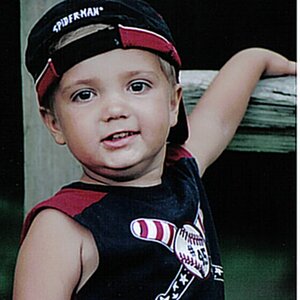
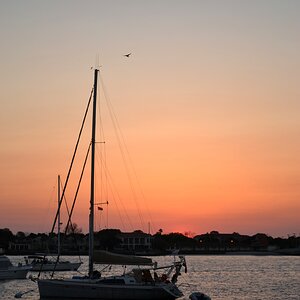
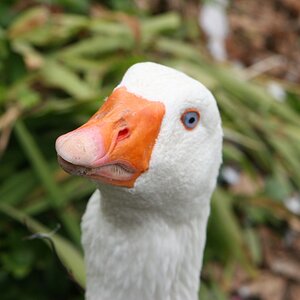
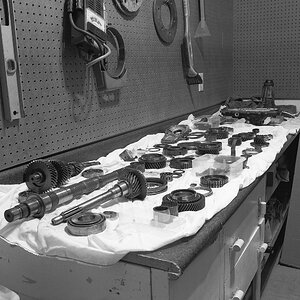

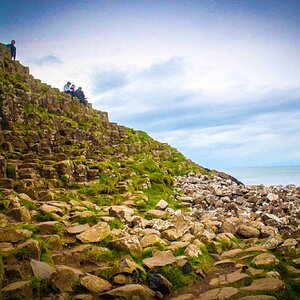
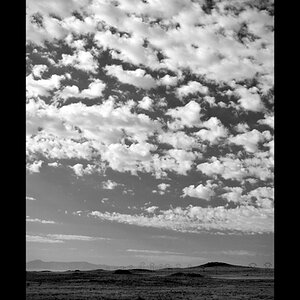
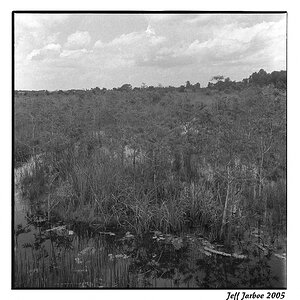

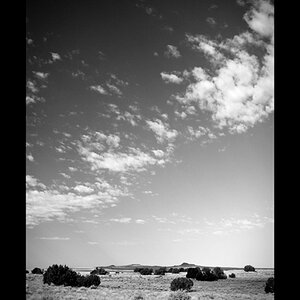
![[No title]](/data/xfmg/thumbnail/42/42040-7a66cabbeffd44783ea44a91ef4d0e70.jpg?1619739987)